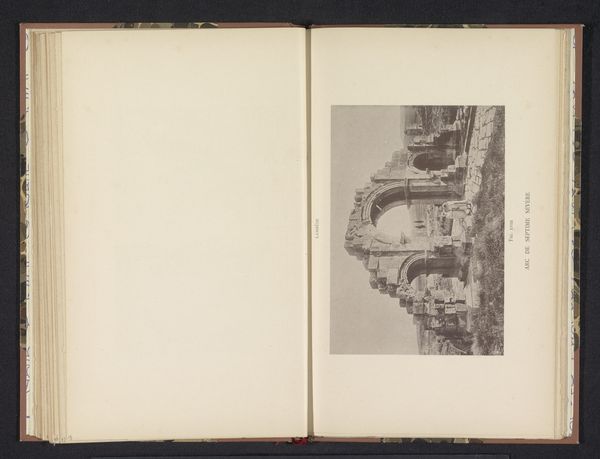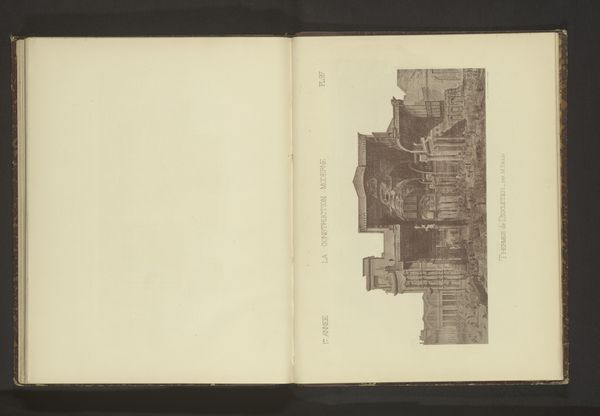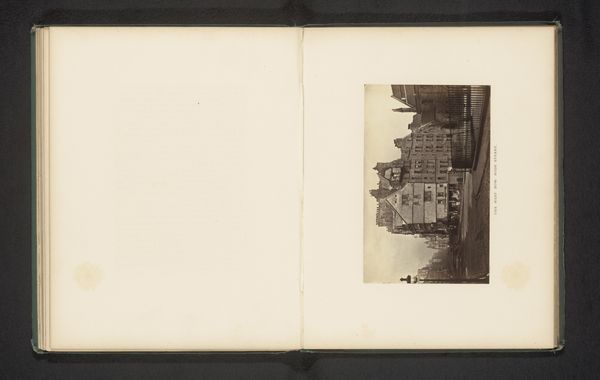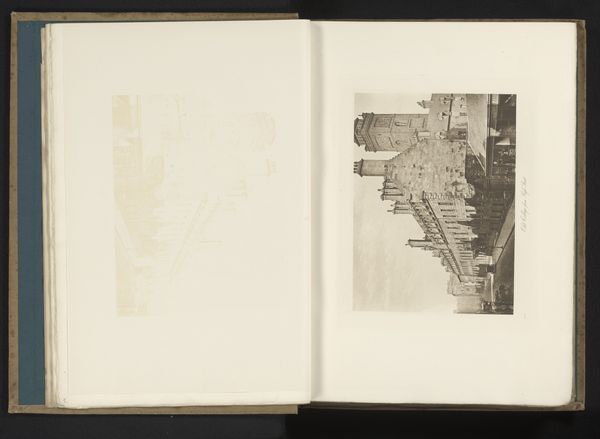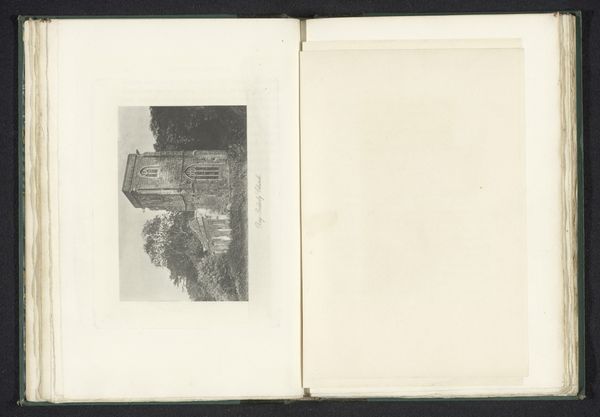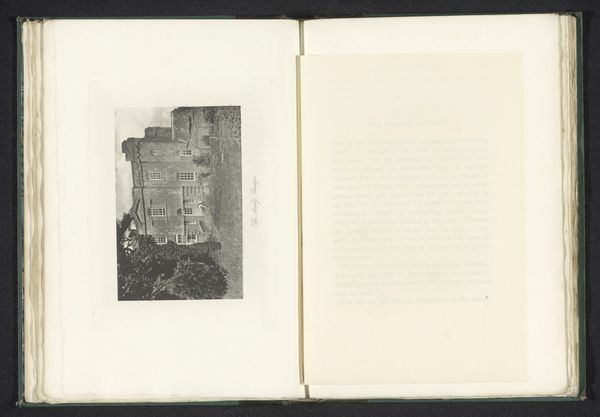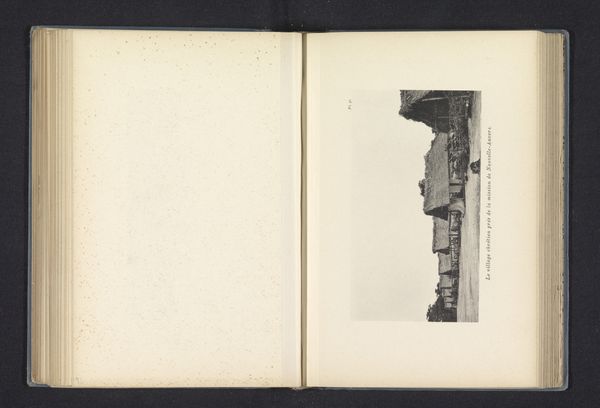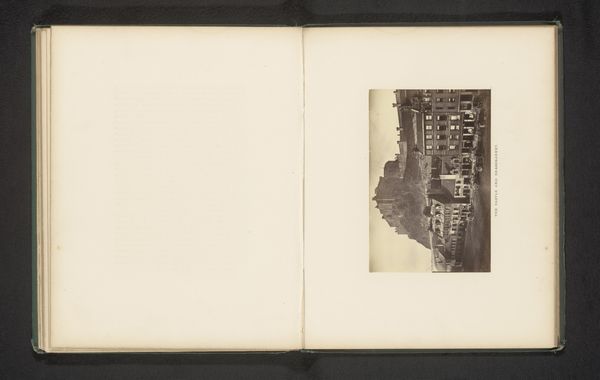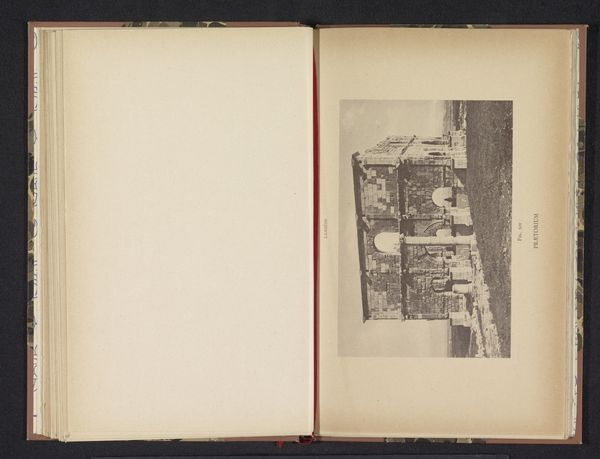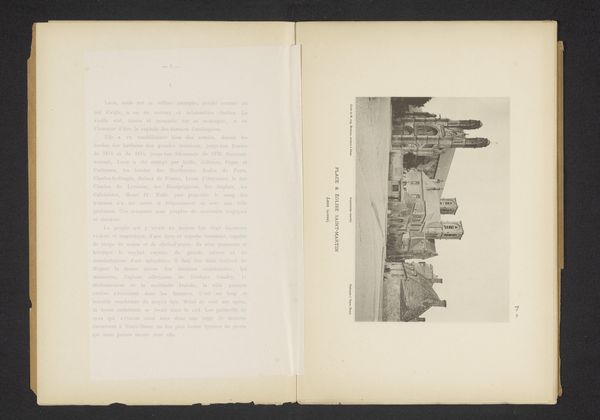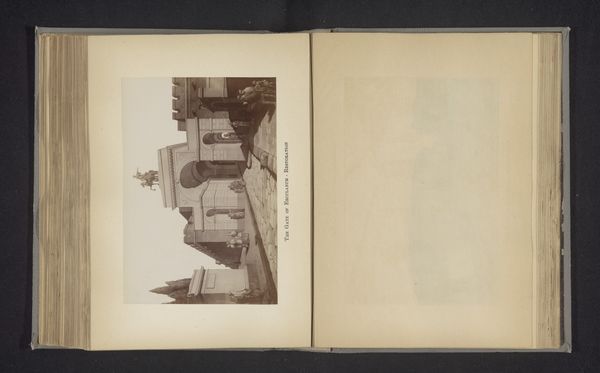
#
type repetition
#
script typography
#
hand drawn type
#
hand-drawn typeface
#
fading type
#
thick font
#
white font
#
delicate typography
#
historical font
#
small font
Dimensions: height 102 mm, width 152 mm
Copyright: Rijks Museum: Open Domain
Curator: This photograph, titled "Gezicht op de oude stadsmuren van Andernach," offers us a glimpse into late 19th-century urban life, taken sometime between 1881 and 1891 by an anonymous photographer and held at the Rijksmuseum. Editor: Immediately, I'm struck by the palpable sense of age, decay even. The walls look tired, like they've seen a lot of history pass before them. There is a sense of enduring, maybe melancholic presence of these old fortifications. Curator: Indeed. We see this in the photograph’s deliberate focus on the aged textures and architectural details. The strategic use of light emphasizes the social role of architecture within a culture struggling with new forms of political expression that both celebrates and reframes narratives about class and labor in Europe at that time. Editor: It's interesting how a seemingly straightforward image of architecture invites deeper thinking about identity and social power. For instance, who were these walls built to protect, and from whom? What kind of sociopolitical narratives of class struggles can be revealed here? Curator: Absolutely, we can consider these city walls not just as static structures but as potent symbols of protection, division, and exclusion. Walls are as significant and resonant now as they were at the end of the nineteenth century. Editor: Agreed, considering current global politics and discussions around borders, migration, and citizenship. It becomes clear that an historical art image prompts critical reflections on our present. This image serves as a somber reflection on power structures that continues to exclude and reinforce hierarchical narratives of who belongs and who doesn’t. Curator: Well said. This image gives us space to evaluate how deeply our present issues are anchored to history. It provides, potentially, some ground for grappling with social problems by better recognizing how previous responses—fortification in this instance—influence current realities. Editor: Exactly, turning what could have seemed a somewhat dull document into an experience. Reflecting on our collective identity and purpose using history as the base!
Comments
No comments
Be the first to comment and join the conversation on the ultimate creative platform.
